The only woman who comes to mind when we look at the Bahujan movement today is Mayawati, the Bahujan Samaj Party supremo and former chief minister of Uttar Pradesh. This, despite the fact that Bahujan social justice movement founder Kanshiram paid special attention to mentoring women leaders. Through the late 1970s and ’80s, Kanshiram would visit the homes of many women activists to urge them to take up leadership roles. But all that rich history has now shrunk into the image of only one woman in popular memory, eclipsing scores of unsung women leaders across Punjab, Haryana, Himachal Pradesh, Rajasthan and Uttar Pradesh.
Even those who chronicled the history of the early days of the Bahujan Andolan and BAMCEF left these women out — a common and deliberate sleight of hand in historiography around the world. These women were active political participants, right from the genesis of the movement, and were not merely cultural participants. They held key political positions in Kanshiram’s party politics.
Bringing out the hidden histories of Bahujan women such as Harvinder Kaur, Sheela Rani, Darshana Devi, Nirmala Dasua, Usha Rani, Rekha Chaggla and Kanta Alaria will fill an important gap in the Indian political canon.
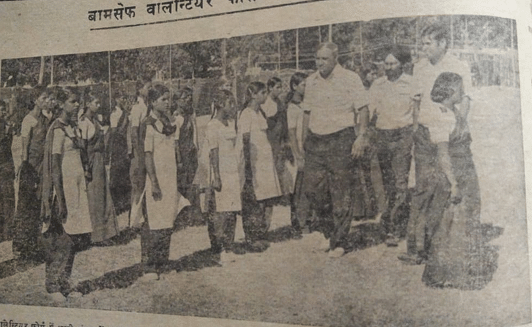
Also read: Kanshi Ram ran BSP military-style. The problem is Mayawati runs it like a bureaucracy
Sheela Rani and other Bahujan leaders from Punjab
The ‘Bahujan Andolan’ is a socio-cultural-political movement in North India. Its genesis lies in the formation of BAMCEF (all-India Backward and Minority Communities Employees Federation) on 6 December 1978. One of the important members of BAMCEF, Tejinder Singh Jhalli, who was then its chief, said that the organisation had about two lakh members, including women. However, since the BAMCEF movement largely comprised government employees, there was a need for an alternate socio-cultural wing that would take the ‘Bahujan Andolan’ to its next level. The socio-cultural wing of the movement was started in the early 1980s in the form of DS4 or the Dalit Shoshit Samaj Sangharsh Samiti. Eventually, this socio-cultural movement was politicised and it led to the birth of the Bahujan Samaj Party (BSP) on 14 April 1984.
The largest number of women participants in the Bahujan Andolan were from Punjab and Uttar Pradesh. They were deeply attached to ‘Manyavar’ Kanshiram’s struggle. The most prominent names from Punjab were Sheela Rani, Darshana Devi, Rachana Devi, Nirmala Devi and Harvinder Kaur.
In interviews, early women activists from Punjab told us that Sheela Rani had a crucial role in bringing women of the state together. Kanshiram would consult her on political matters. She was the main face of the BSP in Punjab and was active in the Majha, Malwa and Doaba regions. She died in 2004, on stage, while delivering a speech at a rally.
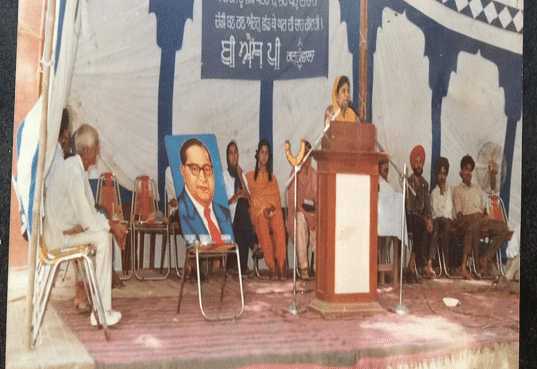
The long interviews with some of these activists proved that they are still deeply attached to the Bahujan struggle.
Darshana Devi said she had fought the assembly election from Mukerian constituency of Punjab in 2007 and stood third. She has been active in the Kandi regions of Punjab, which includes Hoshiarpur and Gurdaspur. She was popularly called the ‘Mayawati of Punjab’ because of her commitment to BSP politics. In an Amar Ujjala report on 15 June 1996, Darshana Devi she was photographed with the title, ‘Kanshiram’s search for Mayawati of Punjab’.
“I, along with my husband, have given our entire life to BSP politics. After my husband’s death, I struggled alone. I would manage my children, my school and party politics. Saheb [Kanshiram] was my greatest strength and inspiration. I used to meet him often in Jalandhar. He would visit my house to encourage me. He ensured that many women like us are well integrated with BSP. His death shattered me,” Darshana Devi told us. “The degree of closeness I had with him, I have not felt with Mayawati. I have met her only formally two-three times.”
Another early BSP activist was Nirmala Dasua, who showed her political commitment by fighting the assembly election from Garhdiwala, Punjab in 2002. Even though she failed to win the seat, her presence and work boosted BSP results. She had worked in coordination with other BSP workers such as Sheela Rani.
Nirmala Dasua told us that Kanshiram had helped her dream bigger. “I was too simple a woman to be part of politics. It was Saheb who took me out of household chores like making dung cakes and cooking. He showed me the dream of an egalitarian society. It is due to Saheb that I came out of oblivion. I realised that as a Bahujan woman, I deserved a better life,” she said.
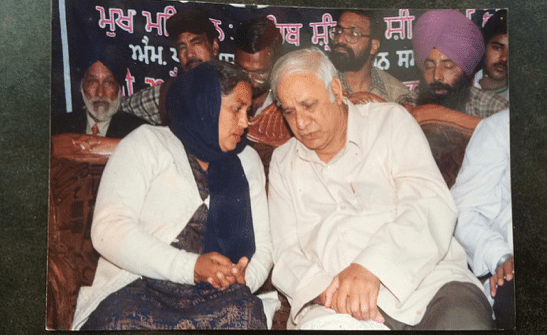
Rachana Devi from Phagwara district was the Hoshiarpur general secretary of BSP and played a crucial role in creating Bahujan solidarity in the area. Kanshiram also fought from the Hoshiarpur constituency for his Lok Sabha seat. The women-led struggle in Hoshiarpur was one of the reasons for his victory.
Another important Bahujan woman who played an active role in Kanshiram’s struggle was Harvinder Kaur, daughter of Tejinder Singh Jhalli. She participated in the historical cycle march of 1984 from Delhi to Jammu along with Kanshiram. She was associated with both BAMCEF and DS4. “My memory with BAMCEF goes back to when I was 14-years old. I had participated in a BAMCEF meeting in Chandigarh and sung a Punjabi song dedicated to mission,” Kaur told us.
Many other women members of the BSP participated in Punjab politics such as Manjinder Kaur from Patiala, Hardev Kaur Shant from Jalandhar and Sawarna Kaur from Balachaur constituency.
Also read: How ‘manyavar’ Kanshiram stood up for a colleague and changed Indian politics
Women leaders from Himachal to Uttar Pradesh
The active participation of women from Punjab also encouraged other women from Himachal Pradesh, Jammu, Rajasthan and Haryana to join the early Bahujan movement.
Usha Devi fought the assembly election from Gagret constituency in Himachal Pradesh in 1993. She was supported by many other Dalit women, including Sheela Rani from Punjab. Even though she lost the election, her political engagement with the BSP acted as an early entry point for the party in Himachal Pradesh. Other politically active Bahujan women from Himachal Pradesh were Kamlesh from Palampur and Saroj Kumari from Nadaun.
Usha Devi, now 72-years old, told us about her struggle as a Bahujan woman. “After my good performance in the assembly election, I was offered a ticket from the Congress. Joining the Congress would have been easy for me because it was willing to pay me well. But I rejected the offer because, for me, politics was not about money, it was about social gratification. My association with Saheb has given me the courage to speak and stand up for my rights. As a Bahujan woman, I know how harsh our caste realities are. Becoming part of a political struggle is a way of coming out of that humiliation,” she said.
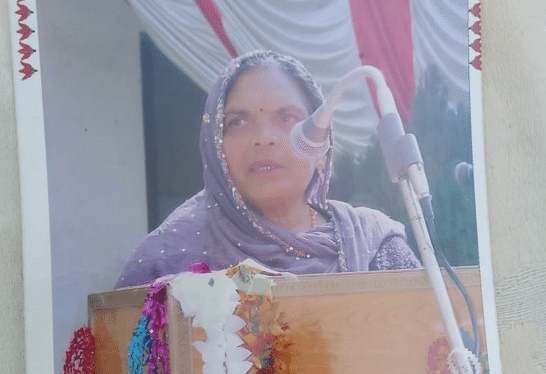
“When Mayawati was fighting election from Hoshiarpur constituency in 1992, I remember I was present throughout her campaign. We had compromised on our sleep to ensure her win,” she added.
In Rajasthan, Kusum Meghwal, who was the BSP state general secretary in 2001, organised cadres for her party in 21 districts and worked to increase socio-political awareness among women. She split from Mayawati’s BSP in 2003 and joined the Rashtriya Bahujan Samaj Party (RBSP). She justified her discontentment saying that her work was never appreciated after Kanshiram’s illness. Recounting an incident, she said, “Once there was a BSP meeting at Jaipur, which was presided over by Mayawati. There was an entry fee of Rs 50 for party workers. However, when I tried to enter, there were strict instructions given that I should not be allowed inside even if I pay Rs 500. This led to my dejection from the party, for which I had given my life and soul.”
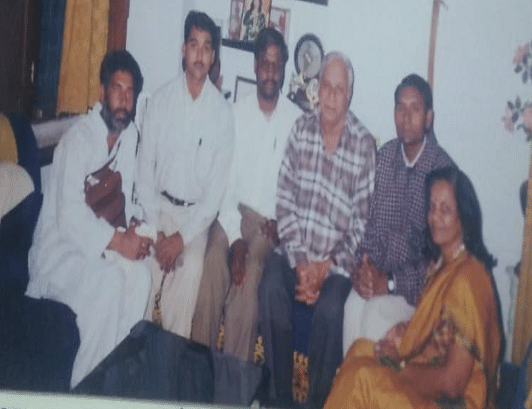
Kanta Alaria, from Haryana, told us she has been associated with BAMCEF and BSP since 1984. Kanshiram referred to her as his ‘beti’ (daughter). In 1986, she was made the secretary of Rohtak district, a position she held till 1992. Alaria sat in the famous Delhi Boat Club protest along with Kanshiram for 41 days for the implementation of the Mandal Commission report.
Other Bahujan women who actively participated in Haryana politics were Shrimati Chandravati, who fought from Kiloi in the 1987 assembly election against Bhupinder Singh Hooda and Rajbala Chauhan, who was state general secretary from Sonipat in the late 1980s, Shakuntala Bhatti from Yamunanagar and Ishwar Kaur Narwal from Panipat.
Kanta Alaria said, “Mayawati had stayed briefly with Ishwar Kaur Narwal after she left her home. However, when Mayawati became party president Narwal was forced to resign”. These narratives reflect Mayawati’s failure to keep together the old party workers.
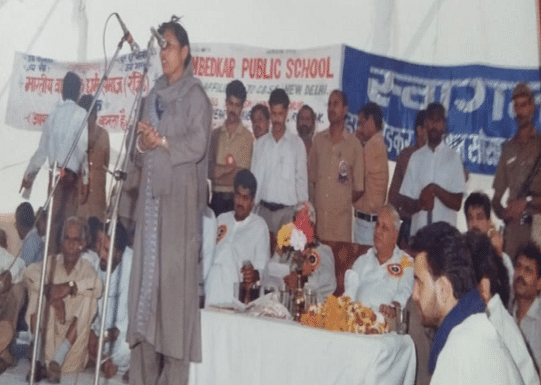
Kanshiram’s politics was as powerful and widespread in Uttar Pradesh as was in Punjab. He won his Lok Sabha seat from Etawah district in Uttar Pradesh. The role of women Bahujan politicians in the heartland state has also been significant, but it remains undocumented and forgotten. Rekha Chaggla, Rameshwari Devi, Kasturi Baudh, and Angoori Devi, along with Mayawati, were part of the movement in the state.
Rekha Chaggla she had fought for election from Ajitmal, Auriya district of Uttar Pradesh in 1993, before Mayawati became chief minister in 1995. Another politically active woman was Rashmi Gautam from Bulandshar, Uttar Pradesh. She was later active in Baruch in Gujarat. One finds the mention of these names in the magazine ‘Bahujan Sanghatak’ that was edited by Kanshiram himself.
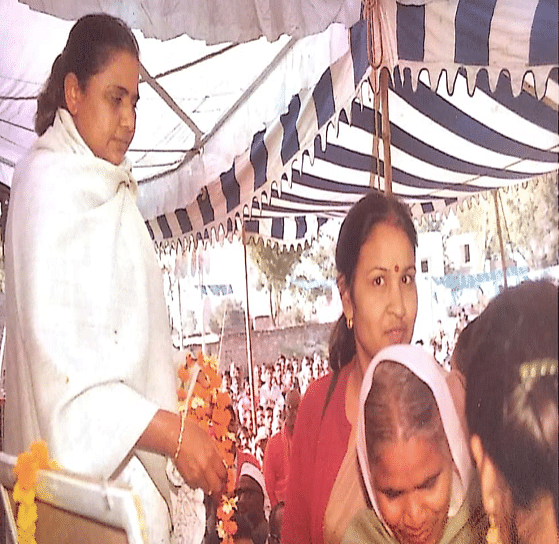
S. Singh
Rameshwari Devi fought the assembly election from Nagina, Uttar Pradesh in 1989 (she got 32,553 votes in her reserved category). Kasturi Baudh and Angoori Devi were also active in early BSP politics.
The role of Mayawati, both as a party president and chief minister, signalled a new height for women in the movement but also eclipsed these early regional Bahujan leaders.
Also read: The Mayawati era is over. Bye Bye Behenji
Bahujan women as ‘counterpublics’
The Bahujan Andolan was built on the blood and sweat of many women, whose commitment to the movement was second to none.
The overwhelming participation of women in socio-political-cultural spaces led to the re-imagination of women’s identity within the Indian political setup. Every woman who participated in the Bahujan Anadolan had her own story of resisting caste structures in everyday life on the one hand and ensuring their political adherence to the Bahujan movement, on the other.
For women to come out and stand strong for Bahujan politics was never easy given the socio-economic challenges they faced. Many of these women spoke about the umpteen struggles they experienced to be a part of what scholar Nancy Fraser called ‘subaltern counterpublics’.
“My struggle in the Bahujan Andolan was never easy. There were some men from the movement who always wanted to put me down. Further, given my economic situation, it was difficult to manage life and politics. But it was Saheb’s struggle that always encouraged me,” Nirmala Dasua told us. Usha Devi too went through a similar conundrum. “The Bahujan Andolan was never a cakewalk. I had to manage politics along with my family, but this challenge never deterred me,” she said. Harvinder Kaur saw her participation in the Bahujan movement as a way to fight caste-based discrimination. “As a young woman, I loved to participate in BAMCEF programmes and recite poems. It was empowering,” she said.
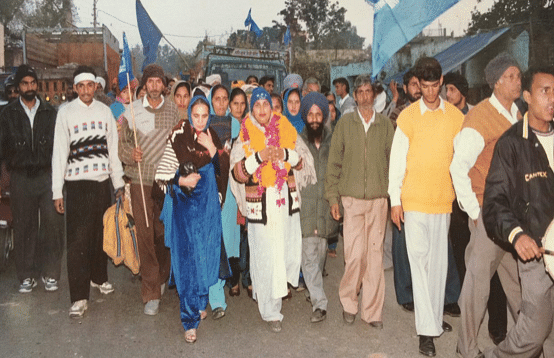
| Nirmala Dasua Personal Archive.
Also read: Political compromises damaged Mayawati’s BSP. Chandrashekhar Azad’s party wants to fill in
The crisis now
Despite its potential, contemporary Bahujan politics faces a crisis given the recent downfall of BSP’s vote percentage in several states. There is also a popular sentiment against Mayawati because she failed to address Bahujan interest on several issues — like her silence on atrocities faced by Dalits, lack of acknowledgment of young leaders, promoting her dynasty at the party’s cost.
But the problem is Mayawati’s personal conduct and not ideological dearth in Bahujan politics. When Kanshiram laid the foundation of the Bahujan movement, he stood against all these. He never opted for dynastic politics, and distanced himself from his family to ensure that his commitment to the movement was not compromised. He engaged with new people and made sure that every last person in the Bahujan community got equal opportunity and participation.
The problem with contemporary Bahujan politics is that it has been hijacked by a single face and name, which is against the very essence of Kanshiram’s ‘Bahujan’ idea. For him, the Bahujan Andolan would give a socio-political-cultural voice to 85 per cent of India’s oppressed population. He said: ‘85 par 15 ka shashan, manjoor nahi, manjoor nahi (We will not accept 15 per cent upper-castes ruling 85 per cent of the rest).’
In contemporary Bahujan politics, it is an irony that Mayawati is called ‘Behenji’ when she failed to uphold the spirit of Bahujan sisterhood. This attitude has only added to the discontentment among senior BSP leaders, who feel forgotten, and many have left to form their own parties. This political trend has divided the very idea of the Bahujan movement that Kanshiram conceptualised.
Also read: BSP’s ‘Sarvajan’ slogan has been usurped by BJP. Mayawati should worry
Reclaiming the Bahujan movement
Contemporary BSP politics needs to realign itself to the ideas of Kanshiram if it wants to restore the faith of millions of Bahujans. It needs to go back to its roots to reinvent itself for 21st-century politics.
Kanshiram struggled to ensure women’s presence in Bahujan politics. But the number of women in BSP has embarrassingly declined, as has the number of women candidates given tickets. Even the women who are present function as mouthpieces of Mayawati. There is no critical engagement or groundwork. There is no Sheela Rani or Usha Devi, reaching out to women and taking the Bahujan Andolan forward.
In the 2019 Lok Sabha election, BSP fielded the least number of women candidates. Further, most of the women in the BSP now come from well-off economic-political backgrounds. This is very much against Kanshiram’s political ideology. He promoted women from marginal backgrounds, who had a deep sense of commitment to the socio-political aspects of the Bahujan movement. Mayawati’s BSP has only widened the gap between the earlier Bahujan women workers and contemporary party politics.
The acknowledgment of early women political leaders and activists will ensure that the space for women in the Bahujan movement is reclaimed. If not, Bahujans are ever willing to look for newer political alternatives.
The participation of women in the early Bahujan Andolan is an important entry point to understand how women have shaped Indian politics. But they are the most easily forgotten, functioning often as footnotes of history. In the case of Bahujan women leaders, not even that. Kanshiram had made women a part of a new Bahujan ‘public sphere’, which ironically, the BSP and Mayawati are now undoing.
Kalyani is a PhD scholar at the Center for the Study of Social Systems, Jawaharlal Nehru University. She tweets at @FiercelyBahujan. Satnam Singh is a renowned Dalit writer and activist. He is a PhD scholar at the Center for Historical Studies, Jawaharlal Nehru University. Views are personal.


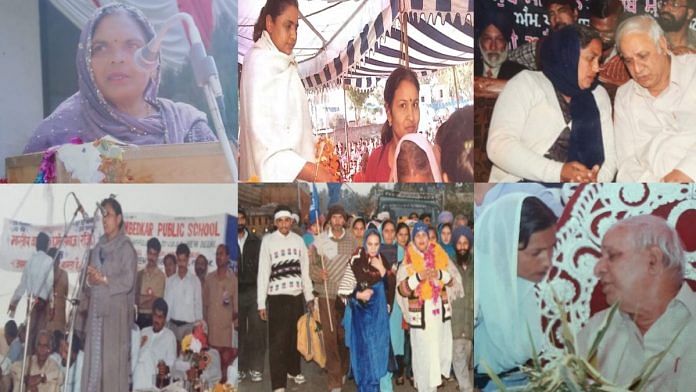

Mayavati has got total assets of more than 1000 crores now. I do not think that was the purpose of the Bahujan movement. Mayavati luxury items holding is on par with the British Queen. There is no difference between her and so-called socialists like Lalu Yadav, Mulayam Yadav and so many in that category. I am sure all other lady politicians whom you are projecting now are better than Mayavati and will do well as politicians.
It seems the so-called PHD scholars of JNU have only one agenda – whip up casteist grievances and peddle them in the terrorised media, like this one. It seems there is a conspiracy to carry out innumerable studies only on SC/ST as if they alone have problems and rest of the society is swimming in opulence. How can that be? Why there is no study on the impact of “Social Justice” policies on lives and fortune/misfortune of the UR Class Hindus, particularly in states like TN, Maharashtra etc?